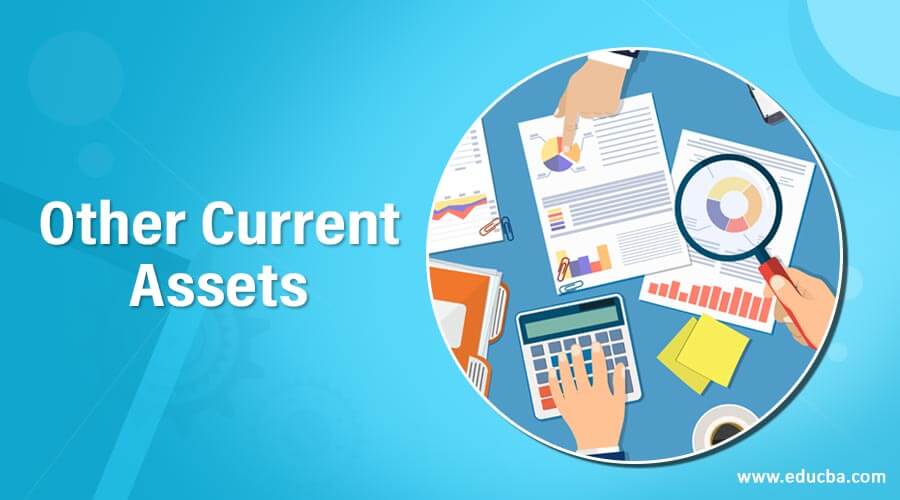Updated July 20, 2023
Introduction to Other Current Assets
Other current assets or OCA are the lists of things that a company owns, draws benefits by putting these into use, and also helps in generating income which can be further converted into cash within one business cycle i.e. these are a list of things that hold some value but are termed as “other” because there are very uncommon or not significant like assets such as cash, bank balance, inventory, prepaid expenses, etc.
Explanation
Other assets are generally uncommon or insignificant classes with a certain value. The company utilizes them, and they generate returns, benefiting the company. They are also highly liquid, like the assets; the cash conversion cycle for these is less than a year. These are also listed on the balance sheet and, together with the assets type, form a part of the company’s total assets. These assets are made to record rarely; hence the net balance in the asset account will be very small.
In scenarios of emergency, companies may provide employees with a minor sum as an advance. Similarly, suppliers may receive advances as down payments or token money. Furthermore, if a company is preparing to sell an asset such as machinery or land, it will record it in the current asset section of the balance sheet.
Formula for Other Current Assets
The assets form a part of the total current asset, but they differ from pure assets. The formula to calculate the asset is as follows:
Thus, we see that the asset is a part of the total current asset, but the insignificant part or very small value makes the entire asset. To compute the asset, we need to exclude the cash, cash equivalents, accounts receivables, marketable securities, inventory, and prepaid expenses from the total asset. The balance amount we get after excluding the above from the total asset is the actual value of “other current asset”. This amount is very small and sometimes non-materialistic, but the purpose should still be recorded in the books of accounts.
Examples of Other Current Assets
Let us take an example of a company, XYZ, which has the following set of items recorded in its balance sheet, and thus, from these items, we will arrive at the asset calculation.
- Cash and Cash Equivalent = $60,000
- Accounts Receivable = $80,000
- Marketable Securities = $20,000
- Inventory = $80,000
- Prepaid Expense = $10,000
Total Current Asset = $255,000.The company’s total asset number is 255,000, where $5,000 is the balancing figure when we add the pure assets. This $5,000 is the “other current asset” figure we arrive at by deducting the total asset from the pure asset figure.
What is Included in Other Current Assets?
A few examples can be as the following scenarios:
- An advance provided to a needed employee during his personal emergency can be a part of the asset.
- An advance made to a supplier as a down payment or token money is also a part of assets.
- A company can have a piece of land or property that the company plans to sell and prepare the required formalities. So, now during the phase when the company is readying the land for selling, this land goes under the asset section of the balance sheet.
- Any amount of restricted cash or investment made by the company will reflect under the section of the asset in the balance sheet.
- Life insurance policies also include any cash surrender value as part of their assets.
Advantages and Disadvantages
Below are the advantages and disadvantages mentioned:
Advantages
The advantages are as follows:
- It helps to capture all the small, insignificant, and uncommon values under a single category in the books of accounts.
- The cash conversion cycle of such an asset is generally less than a year.
- It helps the management keep track of the small number of advances being made available to the employees or suppliers.
- It is a part of current assets and thus possesses a high level of liquidity too.
Disadvantages
The disadvantages are as follows:
- An increase in one asset from the “other current asset” group is sometimes balanced by a corresponding decrease in another asset. In such cases, there will be hardly any materialistic deviation from the total.
- Overlooking assets that have existed for over a year or a business cycle results in their continued treatment as minor components, which can be considered a significant drawback or disadvantage. In such cases, the working capital requirement increases.
- At times there is a lack of clarity as not all companies give a breakdown of what has been recorded under the section of the assets and just put a single total amount.
- The value at times will be so insignificant that it is a waste of time for auditors to dig into such tiny figures.
Conclusion
The asset under consideration, as previously mentioned, is included in the balance sheet. While it may be an unusual or relatively small item, the key advantage highlighted in the preceding discussion is its exceptional level of liquidity, allowing for quick conversion to cash within less than one year.
Recommended Articles
This is a guide to Other Current Assets. Here we also discuss the meaning, examples, advantages, and disadvantages. You may also have a look at the following articles to learn more –




